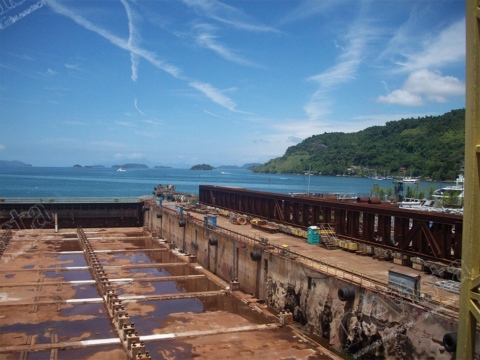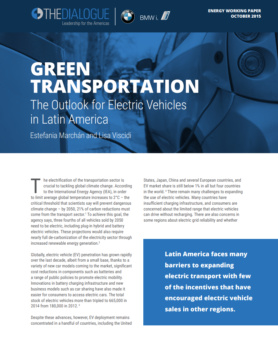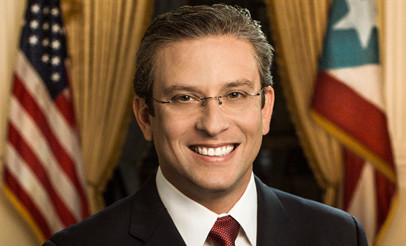
Energy & Politics in Brazil
With Brazil’s state oil company Petrobras engulfed in a massive corruption scandal, the government looks poised to introduce an energy sector overhaul.
A Publication of The Dialogue
In the wake of Hurricane Fiona’s pummeling of Puerto Rico, thousands of inhabitants remain without power. U.S. President Joe Biden pledged $60 million in relief assistance as well as to transform Puerto Rico’s power system, during a visit to the island to survey the damage. Luma Energy began operating Puerto Rico’s frail electric grid last year, but the Puerto Rico Electric Power Authority still holds the island’s grid assets. What does Puerto Rico need to do to make its power grid more resilient? Does its system need a total revamping, as Biden suggests? Does it have enough funds, and what sources of financing are available to the indebted territory?
Rocío M. Velez, legal advisor at SGH2 Energy Global: “Puerto Rico’s energy challenges are six decades in the making. There is no single factor that can address the lack of a robust power grid on an island that faces multiple federal delays in distributing federal funding. The Puerto Rico Electric Power Authority (PREPA) is a bankrupt entity that has a history of mismanagement, excessive costs, bureaucracy and lavish lifestyles of a few so-called union leaders. Puerto Rico is extremely dependent on fossil fuels to run its power grid, and the above ground transmission lines will continue to be an issue, every other year for any hurricane above 60 miles per hour that strikes the island. President Biden visited the island a few weeks ago and in a short three-hour visit, stated that Puerto Rico needed a revamping of its system. The main solution politicians have found for an obsolete power system and 75-year-old transmission lines is to further politicize the matter by insinuating that more funding solves the issue. Federal funding is critical, but it’s not the main challenge. Puerto Rico cannot rely on federal dollars without engaging multiple sectors and well-thought-out planning as well as discussions around where and how infrastructure is installed. The commonwealth needs to integrate solar generation, helping to bring more renewables online and meet its renewable production, which currently is lower than 3 percent. Transmission lines need to be updated and other solutions that improve the flexibility of the grid, such as energy storage and demand-side resources, are needed.”
Charles R. Venator Santiago, associate professor in the Department of Political Science and El Instituto: Institute for Latina/o, Caribbean and Latin American Studies at the University of Connecticut: “Puerto Rico’s power grid was originally created to foster local economic development. Its primary function was to power local industries. The electric power grid was not created for residential use. Following the phasing out of the Section 936 tax exemptions, companies began to leave Puerto Rico, creating an energy consumption vacuum. As a recently released report from the U.S. General Accounting Office (GAO) documents, after the devastation created by hurricanes Irma and Maria, the U.S. federal government allocated more than $32.2 billion for public assistance projects in Puerto Rico and the U.S. Virgin Islands. Yet, in 2022, the GAO found that Puerto Rico’s government had only used a fraction of these and other federal funds to address power grid problems. The question is not whether Puerto Rico has enough funds or resources to address the failing electric power grid, but whether the commonwealth’s government has the will to prioritize the needs of local residents over the profit margins of corporate elites, including Luma Energy, the current company tasked with the distribution of electricity in Puerto Rico. Deciding what source of energy to prioritize has also contributed to the failure to solve the power problem. Some local Puerto Rican elites are stalling efforts to fix the island’s power woes because they want to prioritize the use of natural gas. Progressive activists are demanding alternate sources of energy, including solar power generation (with household batteries). No significant reforms will take place unless the federal government assumes a leadership role in the reconstruction of a new power grid that will prioritize the needs of Puerto Ricans.”
Ingrid M. Vila Biaggi, president and co-founder of CAMBIO: “Hurricane Fiona emphasized the need for a transformation of Puerto Rico’s electrical system to a resilient, decentralized grid based on rooftop solar and storage. Rooftop solar systems functioned during and after Hurricane Fiona, while the entire centralized grid shut down. Hurricane Fiona also revealed what Puerto Ricans have known for more than a year—that the privatization effort that resulted in the transfer of grid operations to Luma Energy has been a failure. Luma has simply exacerbated the vulnerabilities of an already fragile grid. Luma failed to hire the majority of the workers of the Puerto Rico Electric Power Authority and instead is attempting to manage the system with an understaffed and inexperienced workforce. Luma has been completely lacking in transparency about its service restoration numbers and, anecdotally, it appears that there are far more sectors still without power than the company’s numbers suggest. Time and again, Luma has demonstrated an unwillingness to provide information or be accountable to the people of Puerto Rico or local government agencies. There is an opportunity for the government to cancel the contract in November, and this step needs to be taken. Puerto Rico’s electrical system received more than $12 billion in Federal Emergency Management Agency funds after Hurricane Maria five years ago, the vast majority of which has not been spent. Using $9.6 billion of this federal funding for rooftop solar and storage would ensure that true resiliency reaches every home, enabling a break away from the current system that collapses and needs to be rebuilt after every major storm.”
Cate Long, founder of the Puerto Rico Clearinghouse: “Puerto Rico’s electric utility, PREPA, was the first part of the government to default on their debt in 2014. In the intervening period there have been four governors, multiple heads of the utility, the privatization of transmission and distribution, several hurricanes, the transfer of thousands of utility employees into make-work jobs in the central government, no payments to bondholders, hundreds of millions of operating losses and further depletion of the pension fund. Damage from Hurricane Maria in 2017 led the U.S. Congress to appropriate $12.4 billion to rebuild the electric grid and generation facilities. The recent announcement of $60 million by President Biden is a very minor addition to the overall cost of strengthening the electric system. Congress also paid $5 billion after Hurricane Maria to stand up the electric grid. Even though the Puerto Rico government is paying dozens of consultants and attorneys to advise the utility and the public private authority, supervision of the utility has failed, and power outages have accelerated. There are significant outstanding issues around potential conflicts of interest of the consulting firm McKinsey, who advises the oversight board installed by Congress and structured the reorganization of the utility, and various private firms who have received extremely large contracts for the utility. The oversight board says debt restructuring must be completed to complete the utility’s transformation, but this is extremely difficult given that outstanding issues about generation privatization and pension payments for utility workers transferred to the central government remain unresolved.”
José J. Villamil, chairman and CEO of Estudios Técnicos: “Few remember that at one point PREPA was a best practice of what a public utility should be and attracted attention from around the world. If one is to consider the actual and future conditions of the energy system, it’s very important to understand the factors that made PREPA what it currently is, an excellent example of how not to manage a public utility. The major culprit is, as is abundantly clear, the political absorption of the entity, also the reflection of an overall erosion of Puerto Rico’s institutional framework by political intrusion in the management of key entities such as PREPA. At the moment, there is no financial restraint for fixing the system, thanks to FEMA funding, so lack of money is not the problem. At present there are two issues. One has to do with Luma contract, full of contradictions and, as a colleague has indicated, has a moral hazard problem that does not help in achieving stated objectives. By the same token, the entity that negotiated the contract, the Public Private Partnerships Authority, has admitted that it has no capacity to assure that Luma is fulfilling its objectives. This, of course, is a hugely detrimental condition in terms of renovating the system, given the contract’s inadequacies. Looking at energy by itself overlooks the fact that the energy problem is part of a much larger problem that has to do with the erosion of the island’s institutional framework and, at the same time, the lack of capacity in government to successfully execute major policy issues and resolve major problems such as the energy situation. This, in turn, results from not having a clearly articulated mid- and long-term vision for Puerto Rico and a clear roadmap for achieving such a vision.”
Lionel R. Orama Exclusa, professor in the Electrical and Computer Engineering Department at the University of Puerto Rico, Mayagüez: “At the UPR-Mayagüez, as a group of power and energy researchers, we have been working on sustainable energy and resilient power for decades. Even before Hurricane Maria devastated the island in 2017, we warned that the grid was in precarious condition and it had to transform through distributed rooftop photovoltaic systems, solar communities and microgrids, combined with effective demand response programs and energy storage. We also warned that we would need traditional generators until affordable storage was available, but any new, fossil fuel-based generators should be smaller, flexible gas units to maximize renewable energy use. Our current scenario, which deteriorated even further by Hurricane Fiona, provides an opportunity for the transformation of our electrical system toward sustainability and resiliency. However, the electrical system is socio-technical in nature, and physical infrastructure should be based on a new governance structure that is just and collaborative for a real democratization of electric power. This new vision of the electrical system for Puerto Rico will make the island not only more resilient, but also more sustainable and reliable during normal periods. We also suggested that keeping the same type of electric system and simply transferring it from public to private hands would not resolve our electricity challenges. The performance of Luma during the first two years provides evidence. Funding for this transformation is possible through the more than $10 billion that the U.S. Congress approved for reconstruction that the local government has not been able to use. This energy transition could create a very different scenario from that preceding Hurricane Maria. The government must take responsibility to start this transformation and properly allocate funds to the alternatives that can truly increase Puerto Rico’s resilience.”
Tom Sanzillo, director of financial analysis at the Institute for Energy Economics and Financial Analysis: “Puerto Rico has a plan to rebuild the grid and a pledge of at least $12 billion from the federal government to carry it out. The plan calls for a heavy investment in renewable energy. This will reduce the price of electricity, increase resilience and help balance the budget of the utility. PREPA’s current annual budget estimates $3.4 billion for fossil fuels and purchased power, 69 percent of the total. Luma, PREPA and the federal oversight board are working to undermine the plan by supporting more fossil fuels and new natural gas plants. To improve the grid, what is needed is an outside third-party oversight team that can force the players to produce substantial amounts of rooftop solar. This will help the 2,000 families per month who are adding rooftop solar to their homes on their own with no support from the commonwealth. Organizations all over Puerto Rico want to support the goal of 100 percent renewable energy on the island. However, there are even stronger political forces that want to maintain a $3.4 billion fossil fuel budget. So long as this remains so wrong, not much will be gotten right.”
 The Latin America Advisor features Q&A from leaders in politics, economics, and finance every business day. It is available to members of the Dialogue’s Corporate Program and others by subscription.
The Latin America Advisor features Q&A from leaders in politics, economics, and finance every business day. It is available to members of the Dialogue’s Corporate Program and others by subscription.
With Brazil’s state oil company Petrobras engulfed in a massive corruption scandal, the government looks poised to introduce an energy sector overhaul.
Electric vehicles are a critical part of a clean transport agenda, but strong policy incentives are needed to promote widespread EV adoption in Latin America.
Should the US government help Puerto Rico get out from under its debt? What is the best way to approach the task?
 Hurricane Fiona, which struck Puerto Rico last month, devastated much of the island’s power grid. Damage from the hurricane, as tweeted by Resident Commissioner Jenniffer González, is pictured. // Photo: @Jenniffer via Twitter.
Hurricane Fiona, which struck Puerto Rico last month, devastated much of the island’s power grid. Damage from the hurricane, as tweeted by Resident Commissioner Jenniffer González, is pictured. // Photo: @Jenniffer via Twitter.

